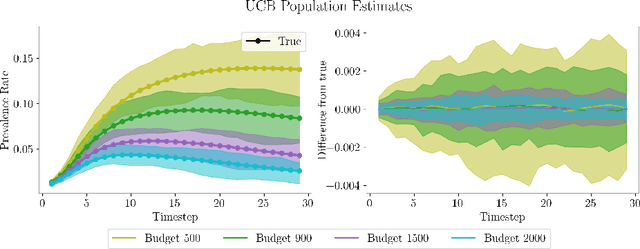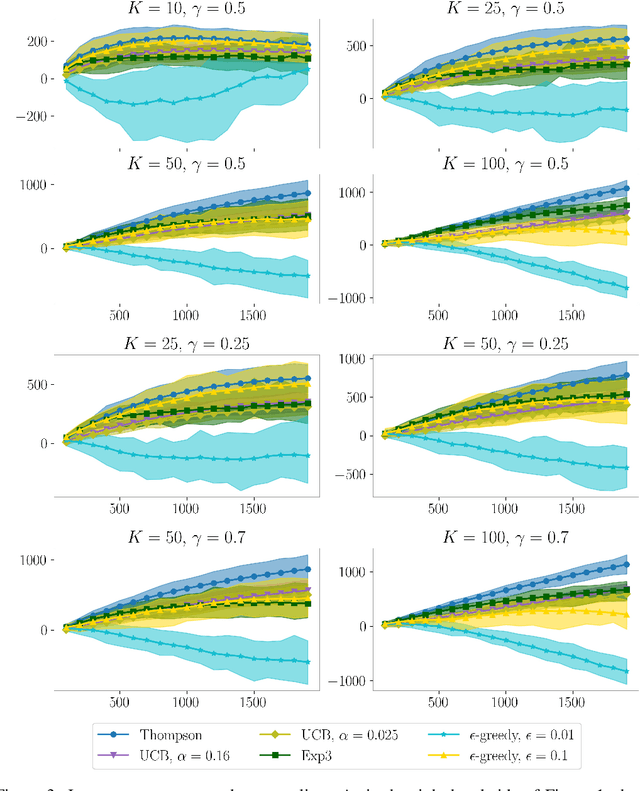Reconciling Risk Allocation and Prevalence Estimation in Public Health Using Batched Bandits
Paper and Code
Oct 25, 2021


In many public health settings, there is a perceived tension between allocating resources to known vulnerable areas and learning about the overall prevalence of the problem. Inspired by a door-to-door Covid-19 testing program we helped design, we combine multi-armed bandit strategies and insights from sampling theory to demonstrate how to recover accurate prevalence estimates while continuing to allocate resources to at-risk areas. We use the outbreak of an infectious disease as our running example. The public health setting has several characteristics distinguishing it from typical bandit settings, such as distribution shift (the true disease prevalence is changing with time) and batched sampling (multiple decisions must be made simultaneously). Nevertheless, we demonstrate that several bandit algorithms are capable out-performing greedy resource allocation strategies, which often perform worse than random allocation as they fail to notice outbreaks in new areas.
 Add to Chrome
Add to Chrome Add to Firefox
Add to Firefox Add to Edge
Add to Edge